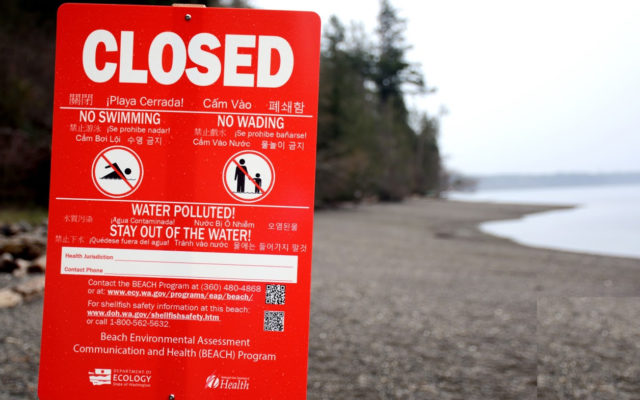Grays Harbor beaches meet water quality standards, but at threat of restrictions due to bacterial pollution

In an annual evaluation of shellfish growing areas, it showed that local beaches are at risk of restrictions due to bacterial pollution.
The Washington State Department of Health issued a report that looks at the recent evaluations of the conditions in and around Washington’s shellfish harvesting areas intended to make growing area classification changes.
The DOH states that the annual water quality evaluation will result in harvest restrictions in four areas, and 18 additional areas are threatened with classification downgrades.
State health officials are working with county partners, shellfish growers and tribal governments to implement the required classification changes and fixing pollution problems in these areas.
Portions of the Annas Bay (Mason County), Pickering Passage -Jones Creek area (Mason County), Port Susan (Snohomish County), and Drayton Harbor (Whatcom County) do not meet public health standards and shellfish harvesting will be restricted. The restrictions will be in place by August.
Shellfish harvest areas currently meeting water quality standards, but threatened with restrictions due to bacterial pollution include:
- Clallam County – Makah Bay
- Grays Harbor County –Pacific Coast
- Jefferson County – Kalaloch, Quilcene Bay
- Kitsap County – Dyes Inlet, Miller Bay
- Mason County – Annas Bay, North Bay, Oakland Bay, Pickering Passage
- Pierce County – Filucy Bay, Vaughn Bay
- San Juan County – Upright Channel
- Snohomish County – Port Susan, Skagit Bay South
- Thurston County – Henderson Inlet
- Whatcom County – Drayton Harbor, Portage Bay
Since 2011, DOH states that they have invested over $38 million in grants around Puget Sound to help improve water quality. These grants, funded by the Environmental Protection Agency’s (EPA) National Estuary Program, support pollution identification and correction projects, on-site septic system management programs, research, and shellfish protection districts.
“These efforts, combined with other local and state funds, have gone a long way to protect and improve water quality around Washington’s shellfish beds.”
Officials state that people can do their part by maintaining their septic systems, picking up pet waste, using pump out stations for boats and recreational vehicles, and managing animal waste from large and small farms.
DOH is responsible for the safety of commercially harvested shellfish in the state and uses national standards to classify all 112 commercial harvest areas.
Recreational harvesters can get up-to-date information on the Shellfish Safety Map.